A* Algorithm (Cambridge (CIE) A Level Computer Science): Revision Note
Exam code: 9618
A* algorithm
What is the A* algorithm?
The A* (A-star) algorithm is a pathfinding algorithm that builds upon Dijkstra’s algorithm
It introduces a heuristic function to improve efficiency
It is used to find the shortest path from a starting node to a goal node in a graph
While Dijkstra’s algorithm considers only the actual cost from the start node:
A* enhances this by estimating the remaining distance to the goal
This makes it more goal-oriented and often more efficient
How A* improves on Dijkstra’s
To avoid inefficient detours, A* introduces a heuristic function, called h(x)
It estimates the straight-line distance (Euclidean distance) from the current node to the goal
A* combines both cost and estimate using the formula:
f(x) = g(x) + h(x)
g(x) = the actual cost from the start node to the current node
h(x) = the heuristic estimate to the goal node
f(x) = the total estimated cost of the cheapest solution through node x
By choosing nodes with the lowest f(x) value, A* aims to explore paths that are both cheap and move closer to the goal
Heuristics in A*
The heuristic function h(x) should never overestimate the true cost to the goal
This ensures A* remains optimally efficient
The closer h(x) is to the true cost, the fewer nodes A* needs to explore
If h(x) increases, it may indicate the algorithm is moving away from the goal, helping it backtrack or choose a better path
Below is an illustration of the A* search:
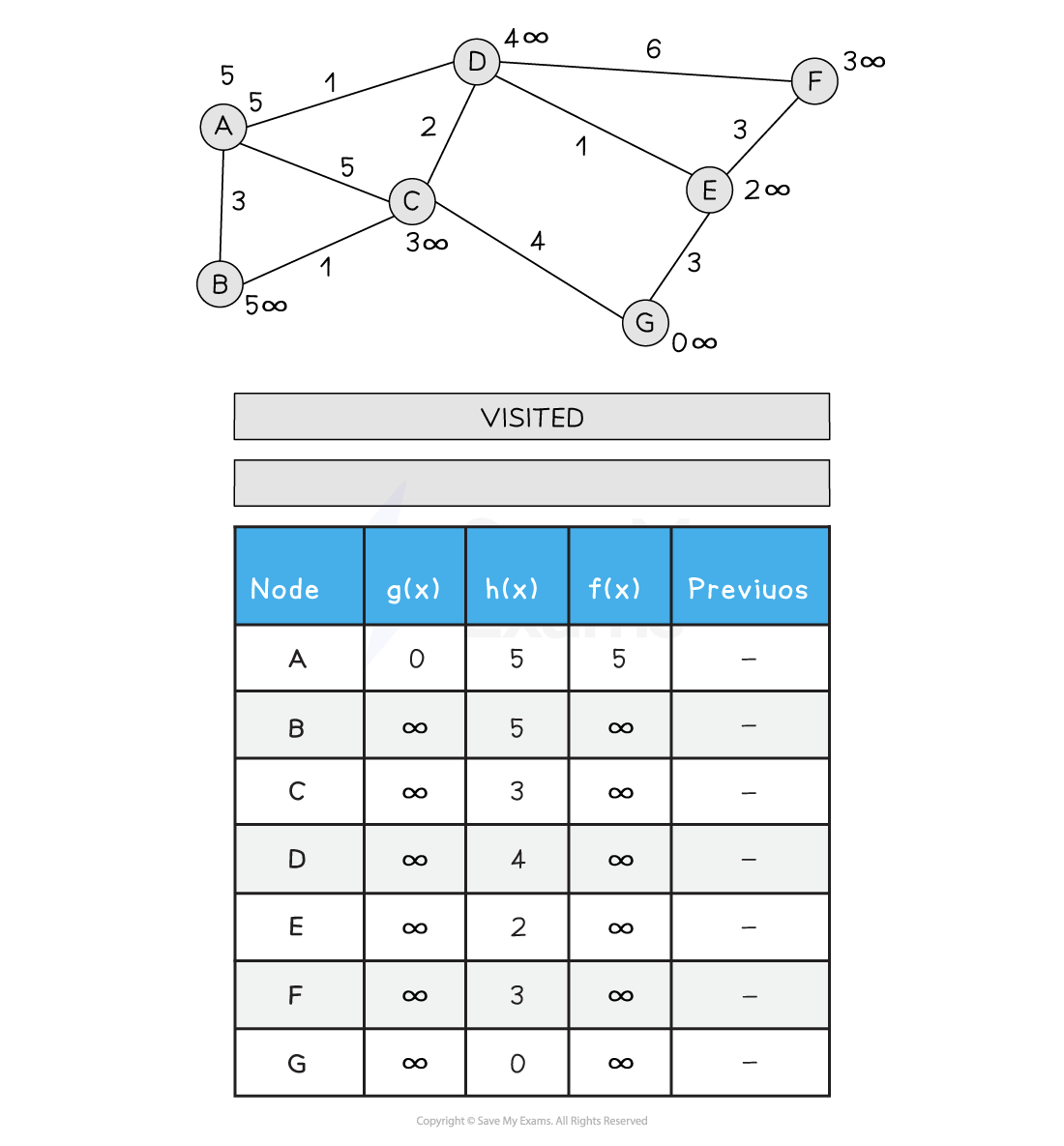

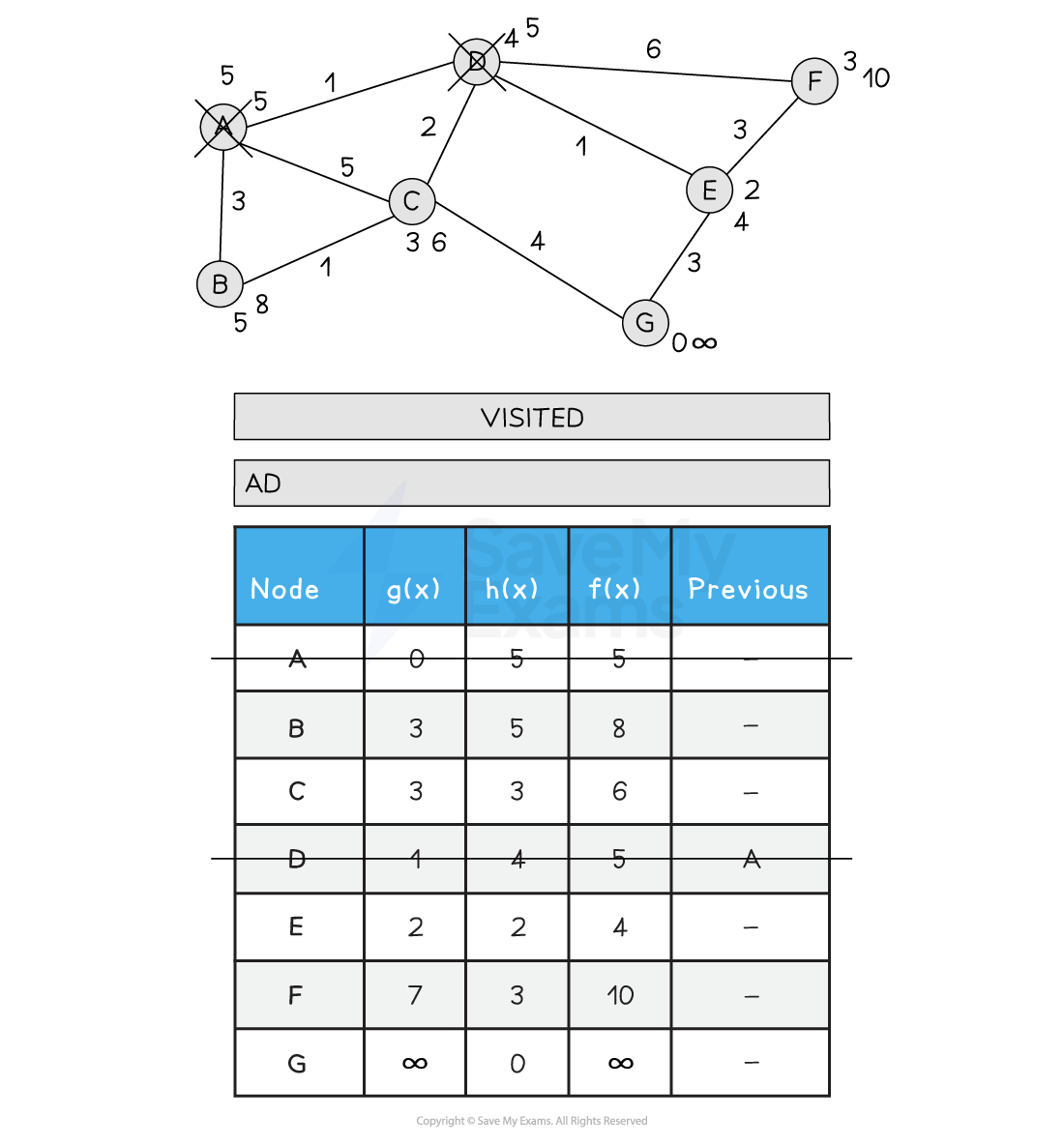
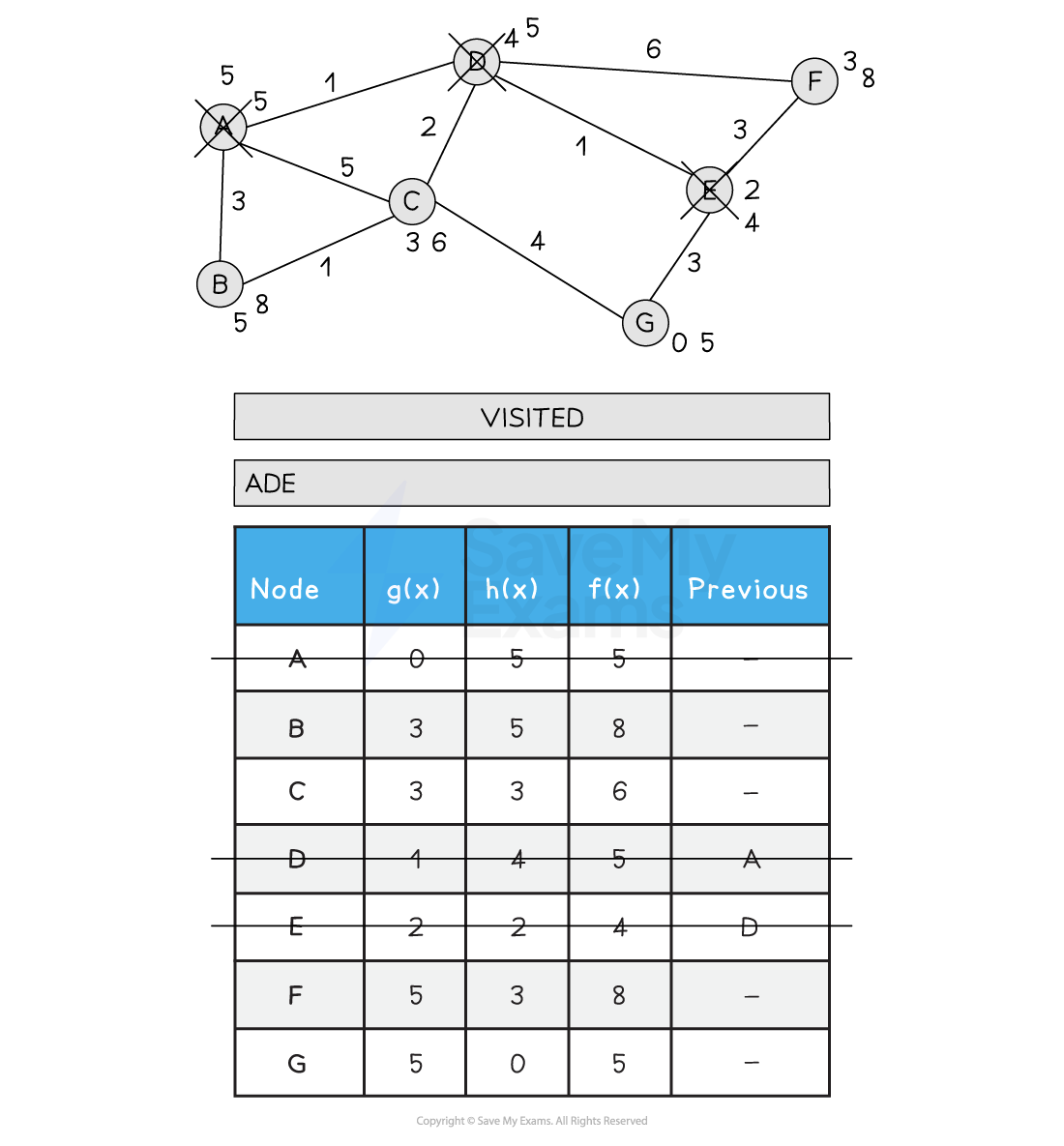
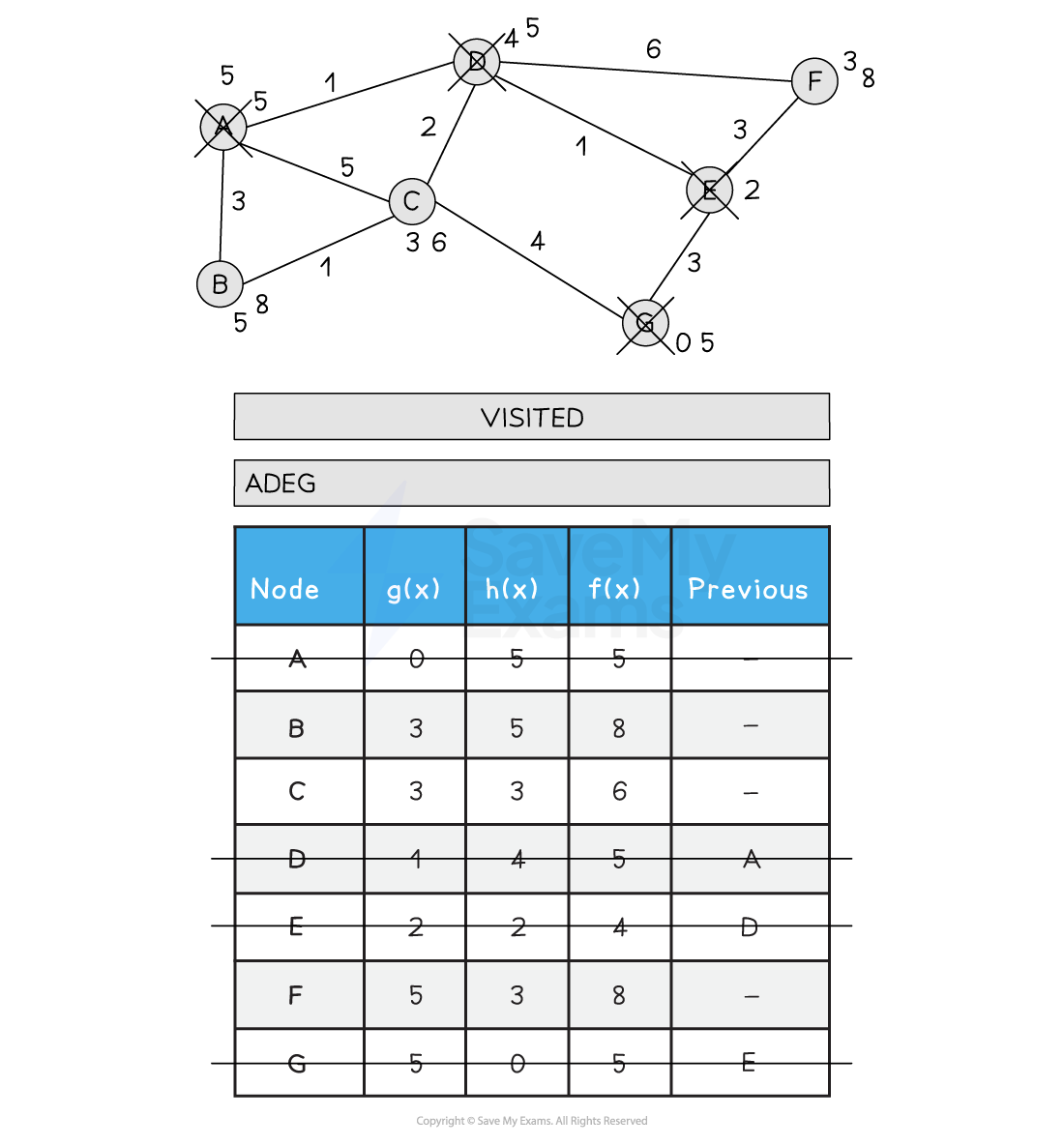
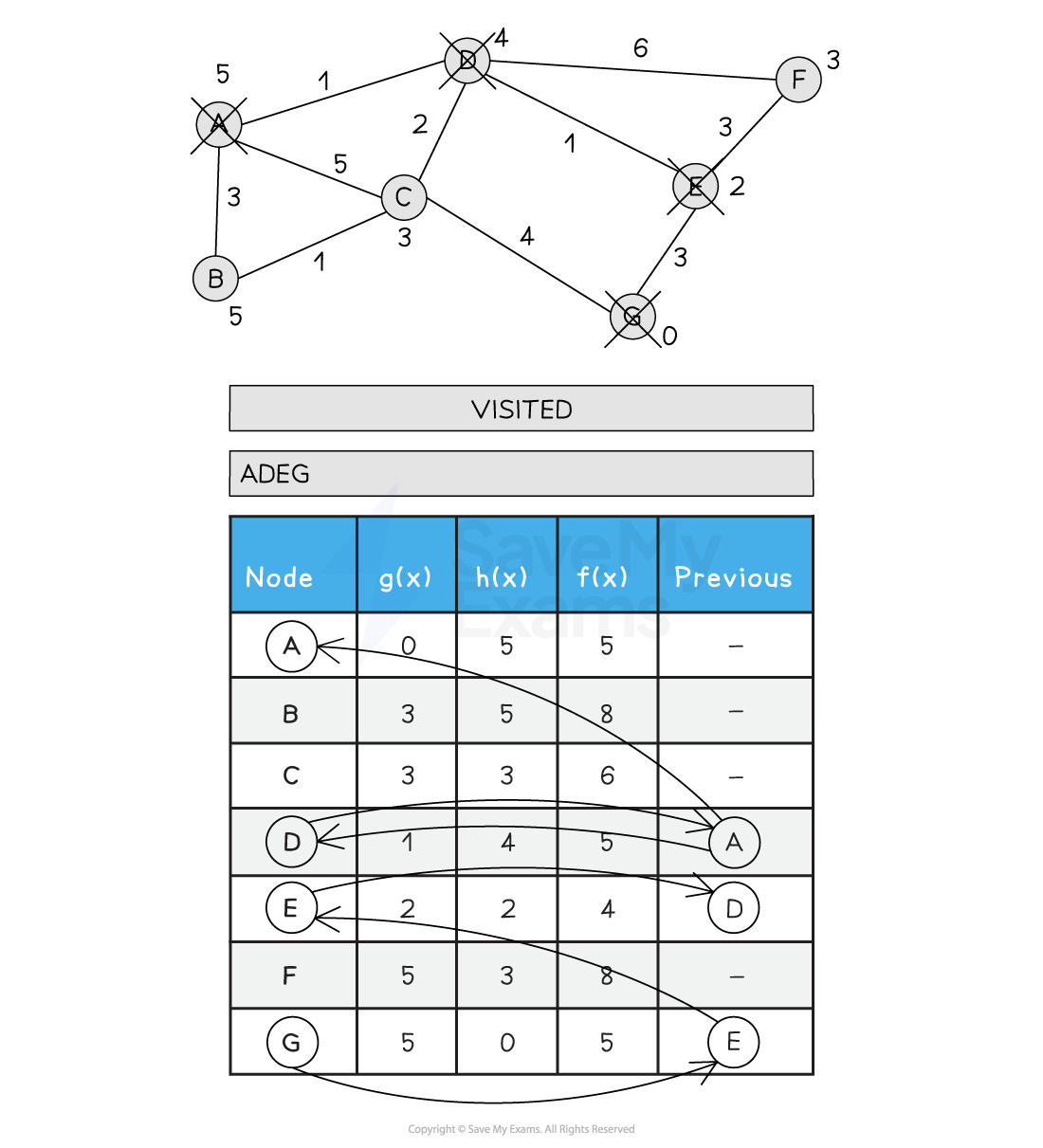
Figure 2: Performing the A* Search
A* vs Dijkstra’s
Feature | Dijkstra’s | A* Search |
|---|---|---|
Goal-aware? | No | Yes |
Cost function |
|
|
Speed | Slower (explores more) | Faster (more direct toward goal) |
Use of heuristic | None | Yes, estimates distance to goal |
Best for... | Full shortest path map | Fastest route to a specific destination |
Programming A* algorithm
How do you write an A* algorithm?
Pseudocode
FUNCTION AStarSearch(graph, start, goal)
// Initialise distances and f-scores
FOR EACH node FROM graph
SET g[node] TO infinity
SET f[node] TO infinity
NEXT node
SET g[start] TO 0
SET f[start] TO h[start]
DECLARE openSet AS LIST
ADD start TO openSet
WHILE openSet IS NOT EMPTY
// Find node in openSet with the lowest f value
SET min TO null
FOR EACH node FROM openSet
IF min = null THEN
SET min TO node
ELSEIF f[node] < f[min] THEN
SET min TO node
ENDIF
NEXT node
IF min = goal THEN
EXIT WHILE
ENDIF
REMOVE min FROM openSet
// Check all neighbours of current node
FOR EACH neighbour FROM graph[min]
SET tentativeG TO g[min] + cost(min, neighbour)
IF tentativeG < g[neighbour] THEN
SET g[neighbour] TO tentativeG
SET f[neighbour] TO g[neighbour] + h[neighbour]
SET previousNode[neighbour] TO min
IF neighbour NOT IN openSet THEN
ADD neighbour TOgraph[min]assumes you're storing adjacency listsh[node]is your heuristic tableg[]andf[]are maps (dictionaries) for real cost and estimated total costcost(min, neighbour)should be defined or assumed available
Python
def a_star_search(graph, start, goal, h):
open_set = [start]
g = {node: float('inf') for node in graph}
f = {node: float('inf') for node in graph}
came_from = {}
g[start] = 0
f[start] = h[start]
while open_set:
# Get node with lowest f value
current = min(open_set, key=lambda node: f[node])
if current == goal:
break
open_set.remove(current)
for neighbour, cost in graph[current]:
tentative_g = g[current] + cost
if tentative_g < g[neighbour]:
g[neighbour] = tentative_g
f[neighbour] = g[neighbour] + h[neighbour]
came_from[neighbour] = current
if neighbour not in open_set:
open_set.append(neighbour)
# Reconstruct path
path = []
node = goal
while node != start:
path.append(node)
node = came_from[node]
path.append(start)
path.reverse()
return pathExample usage:
graph = {
'A': [('B', 2), ('C', 5)],
'B': [('D', 4)],
'C': [('D', 1)],
'D': [('E', 3)],
'E': []
}
h = {
'A': 7,
'B': 6,
'C': 4,
'D': 2,
'E': 0
}
print(a_star_search(graph, 'A', 'E', h))Output:
A possible shortest path from
'A'to'E', guided by the heuristic values

Unlock more, it's free!
Did this page help you?